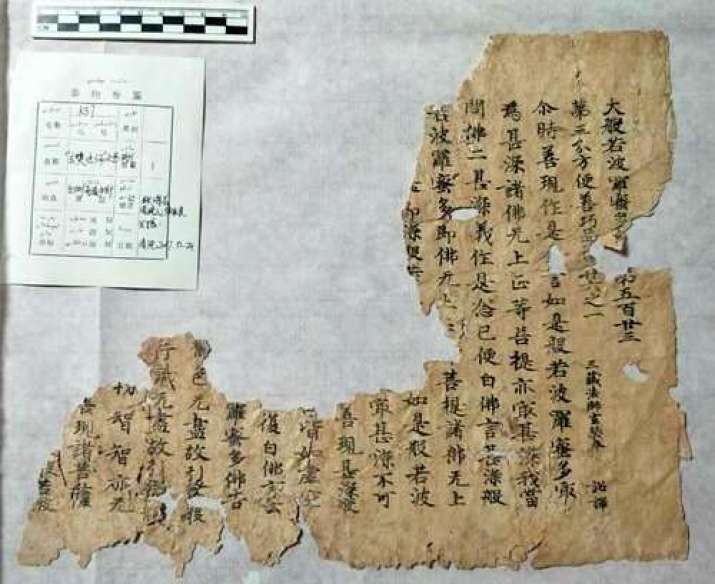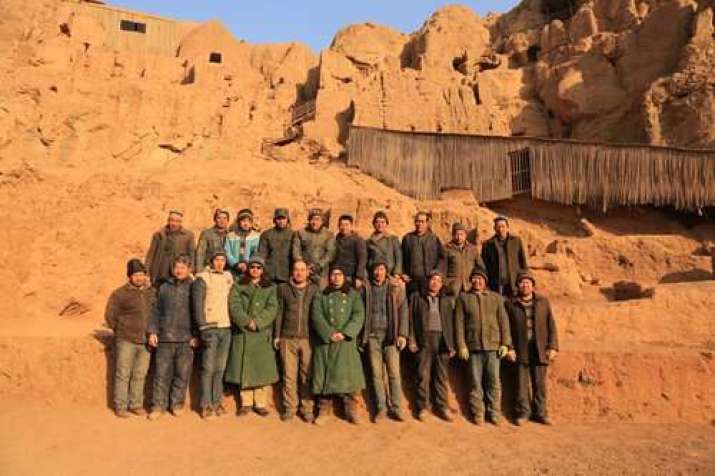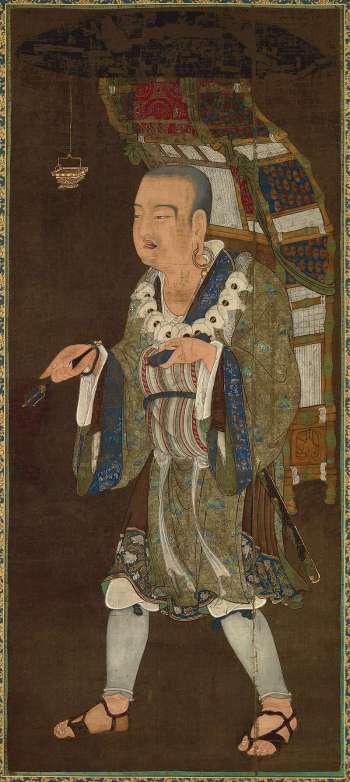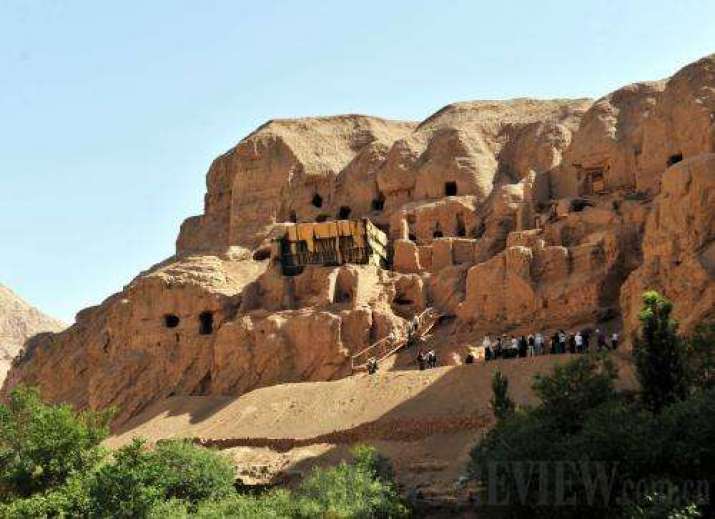
Archeologists working at an excavation at the Tuyugou Grottoes in Xinjiang Uyghur Autonomous Region, northwest China, have announced the discovery of a large fragment of ancient text believed to be a copy of the Mahaprajnaparamita Sutra, translated into Chinese by the renowned Tang dynasty (618–907) Buddhist monk, scholar, and traveler Xuanzang.
The team of researchers from the Chinese Academy of Social Sciences and Academia Turfanica, who concluded the eighth excavation of the Tuyugou Grottoes in January, unearthed a large piece of manuscript, some 20 centimeters by 18 centimeters, bearing a section of the Buddhist text in Chinese. Despite being centuries old, the archaeologists say the rare document is more that 70 per cent intact.
The Mahaprajnaparamita Sutra (Great Perfection of Wisdom Sutra), is a collection of Prajnaparamita* texts often attributed to the Mahayana philosopher Nagarjuna (c. 150–c. 250 CE), and that was later translated into Chinese by Xuanzang and his assistants.

Although a line at the beginning of the text indicates that the sutra was translated Xuanzang on orders of Emperor Taizong (r. 626–649), the researchers said there was no way to be certain who had made this particular document.
“There is no evidence that proves this particular sutra was written by Xuanzang,” said Prof. Xia Lidong from the Chinese Academy of Social Sciences. “Many places carried out translation work and many people were hired to make copies of sutras in Chang’an and Liangzhou [Gansu Province]. It is possible this sutra is a copy written by one of the staff at a translation center.” (Global Times)
However, Xia observed that since the “characters were written carefully and beautifully,” the text was clearly penned by a skilled professional. (Global Times)
In addition the piece of he Mahaprajnaparamita Sutra, more than 150 other manuscript fragments bearingh sutras were also unearthed at the location.
Master Xuanzang (c. 602–64) is considered to be one of the most illustrious figures in Buddhist history, noted for translating numerous Buddhist scriptures from Sanskrit into Chinese and for embarking on a 17-year overland journey from China to India, where he lived for more than 13 years. His time in India included five years spent at the historic monastery and university of Nalanda, a great center of Buddhist learning, where he acquired knowledge of Sanskrit, Buddhist philosophy, and Indian thought.
Upon his return to China in 645, Xuanzang retired to a monastery and devoted his energy to translating Buddhist texts into Chinese until his death. According to his biography, he returned from India with “over 600 Mahayana and Hinayana texts, seven statues of the Buddha, and more than 100 sarira relics.”**
A detailed account of Xuanzang’s journey is recorded in the classic Chinese text Great Tang Records on the Western Regions, which later formed the basis of the novel Journey to the West by the Ming dynasty (1368–1644) writer and poet Wu Cheng’en (c. 1500–c. 1582).

Another major discovery at the Tuyugou Grottoes was the remains of an ancient monastery, named Ding Gu, along with sutra fragments in both Chinese and Uyghur, Uyghur coins, textiles, wooden building materials, and non-religious texts, which include a contract that records commercial transactions between Ding Gu and other monasteries.
“The contract doesn’t just list Ding Gu Monastery,” Xia told the Global Times newspaper. “You can see the names of other monasteries as well, and they are all connected to Ding Gu Monastery.”
Xia noted that the artifacts would help scholars better understand how the economy of the period functioned and the connections between the Tang dynasty and western regions of modern-day China. “We can learn a lot from this new discovery,” Xia explained. “All these unearthed relics provide a window that allows us to see how attitudes toward Buddhism [were] changing in the area. Plus, it gives us a framework for further study of the grottoes.” (Global Times)

Located near Tuyugou Township in Shanshan County, the Tuyugou Grottoes are the earliest Buddhist grottoes in eastern Xinjiang and a major find for the study of Buddhist history and art along the Silk Road. Artwork discovered in the grottoes has been dated to the 4th–13th centuries, while large numbers of written documents unearthed record details of daily life, religion, and culture in the region.
* Perfection of wisdom, or more literally, transcendent wisdom. It refers to the wisdom of directly realizing the non-conceptual simplicity of all phenomena.
** Strong, John. 2004. Relics of the Buddha. Princeton University Press, p. 188.
See more
Archaeologists uncover sutra translation by famous Tang Dynasty monk Xuanzang (Ecns.cn)
Archaeologists uncover sutra translation by famous Tang Dynasty monk Xuanzang (Global Times)














